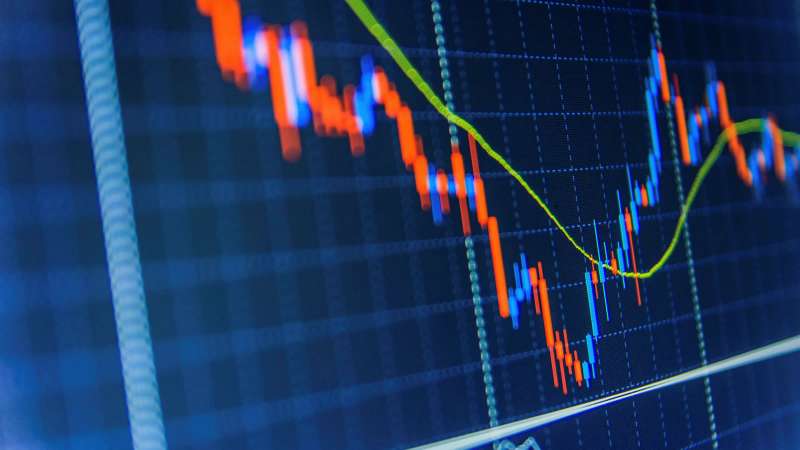
Date: 23 February 2021
Author(s): Leke Oso Alabi, Neil Hume, Azia Kasumov
Source: Financial Times
US technology stocks fell sharply on Monday as rising inflation expectations and long-term interest rates undercut arguments for their high valuations.
The technology-focused Nasdaq Composite closed at 2.5 per cent lower, losing more ground than other benchmark indices. The blue-chip S&P 500 closed 0.8 per cent dip while the Russell 2000 lose 0.7 per cent.
Facebook, Amazon, Apple, Nettflix and Google parent Alphabet—collectively known as the Fanng stocks—all tumbled. Some investors said this could be the beginning of an overdue correction. Apple fell most heavily, declining 3 per cent while Amazon closed at 2.1 per cent lower. Alphabet lost 1.7 per cent.
“Everyone rushed to get more and more tech, and they’ve gotten pretty high, pretty expensive,” said Brandon Pizzurro, a portfolio manager at GuideStone Capital Management.
He added that investors were starting to take a more fundamental look at the future growth potential baked into big tech’s stock prices and are asking themselves, “have we overshot?”
A sell-off in the US government bonds — whose returns are eroded by inflation — picked up again on Mnoday afternoon after a break in the day. The yield on the 10-year Treasury note, which moves inversely to price, rose 0.03 percentage points to 1.36 per cent.
Overnight, the yield on the benchmark note had come just shy of 1.4 per cent before falling back down to 1.33 per cent in the morning.
Low long-term interest rates raise the present value of companies’ future cash flows, which has been a key argument in favour of high-growth tech stocks over the past year. Conversely, rising long-term rates lower the present value of future earnings.
The 10-year yield started the year just above 0.9 per cent, but has been rising consistently with predictions that the US president Joe Biden’s proposed $1.9 trillion fiscal stimulus package will boost consumer prices.
“The main concern is related to the prospect of increased inflation,” said Tancredi Cordero, chief executive at advisory firm Kuros Associates.
“There’s a lot of concern amongst investors in fixed income and businesses that are sensitive to that.”
Such worries also hit Asian markets on Monday, where Japan’s 10-year government bonds rose 0.01 percentage points to 0.13 per cent. The equivalent Australian debt yielded 1.61 per cent, which was its highest level since June 2019.
“The rise in global yields is a reflection of improved growth prospects given encouraging vaccine progress and in the US forthcoming sizeable fiscal stimulus,” Goldman Sachs Asset Management, macro strategist Gurpreet Gill said.
“[It] also signals higher inflation expectations and in turn pulled forward expectations for the timing of monetary policy normalisation.”
The big question is whether rising inflation will push the Federal Reserve away from its path of ultra-loose monetary policy. Investors will watch closely Jay Powell’s semi-annual testimony to the Senate banking and House of Representatives financial services committees on Tuesday and Wednesday to see if the Fed chairman provides clues as to the direction the US central bank will take.
These will be “important events”, said Jim Reid, research strategist at Deutsche Bank.
In Europe, the region-wide Stoxx 600 closed 0.4 per cent lower on Monday following three consecutive weekly gains. London’s FTSE 100 benchmark decreased by 0.1 per cent while Frankfurt Xetra’s Dax was down 0.3 per cent.
Oil prices continued to really meanwhile, on hopes of growing demand for fuel as the global economy reopened following the rollout of COVID-19 vaccines. Crude was also seen as a hedge against inflation by some investors.
Brent crude, the international benchmark, rose 3.7 per cent to $65.23 a barrel, while West Texas Intermediate, the US marker, added 3.8 per cent to $61.49 a barrel.
Driven by report that China’s largest copper smelter was reducing output, copper gained as much as 3.7 per cent to hit a 10-year high of almost $9,300 a tonne in early trading on Monday and later eased to about $8,985 a tonne.
Elsewhere, nickel moved above $20,000 a tonne for the first time since 2015 following a deadly accident over the weekend at a processing plant owned by Nornickel, the world’s biggest producer of the metal. Like copper, nickel saw early gains and was trading at about $19,588 a tonne by the afternoon.
Alastair Munro at brokerage Marex Spectron said industrial metals had also been boosted by the first official statements of 2021 regarding China’s economy.
Articles in Xinhua and other official news outlets discussed strengthening rural infrastructure and modernising agricultural production methods to spur consumption, he said. Such signs of significant growth plans “look set to be a new driver of China’s economy over the next few years”, he added.
In Asia, China’s CSI 300 index fell 3.1 per cent, its biggest one-day drop since last summer, as concerns grew of a gradual tightening in lending conditions. Hong Kong’s Hang Seng lost 1.1 per cent and South Korea’s Kospi 200 dropped 0.9 per cent. Japan’s Topix gained 0.5 per cent.
Keyword : sterlinghousetrust.com, Sterling House Trust, SHT
Sterling House Trust is a private trust with a difference. It offers its members an exclusive and reliable platform to access unique opportunities and lifestyle services reserved for the select few. With its team of professional managers Sterling House Trust constantly scans the markets and collaborate with reliable global partners to create a portfolio of carefully curated programmes for its members. Members can access these programmes according to their individual needs, interest and financial capacity. Sterling House Trust is headquartered in Auckland, New Zealand, and has operations based in London, UK.
The Sterling House Trust platform was established with the objective of providing its members, secure access to opportunities across a range of global locations, sectors and services.

Our unique Platform was established within the framework of a trust so that the trust would have oversight and governance over the range of services and its quality. Member protection is a core principle and drive in all that we do. Our trustees ensures that the interests and quality of service provided by the Platform are always maintained at the highest standards.
The trust and its trustees provide robust oversight and is constantly on the move to identify and shortlist select opportunities in the international markets. Likewise, we apply the same stringent standards in identifying and selecting providers and professional partners to join our Platform.
The Sterling House Trust Platform utilises our international footfall and relationships to provide our members with access to a range of international opportunities via our global network which covers a broad range of sectors including:
Asset protection, international property ownership and management, alternative and direct ownership, estate planning, banking services, foreign exchange, card services, alternative investment and lifestyle services.

New Zealand Head Office
31/335 Lincoln Road,
Addington
Christchurch
New Zealand
London Office
14-16 Dowgate Hill,
London,
England EC4R 2SU